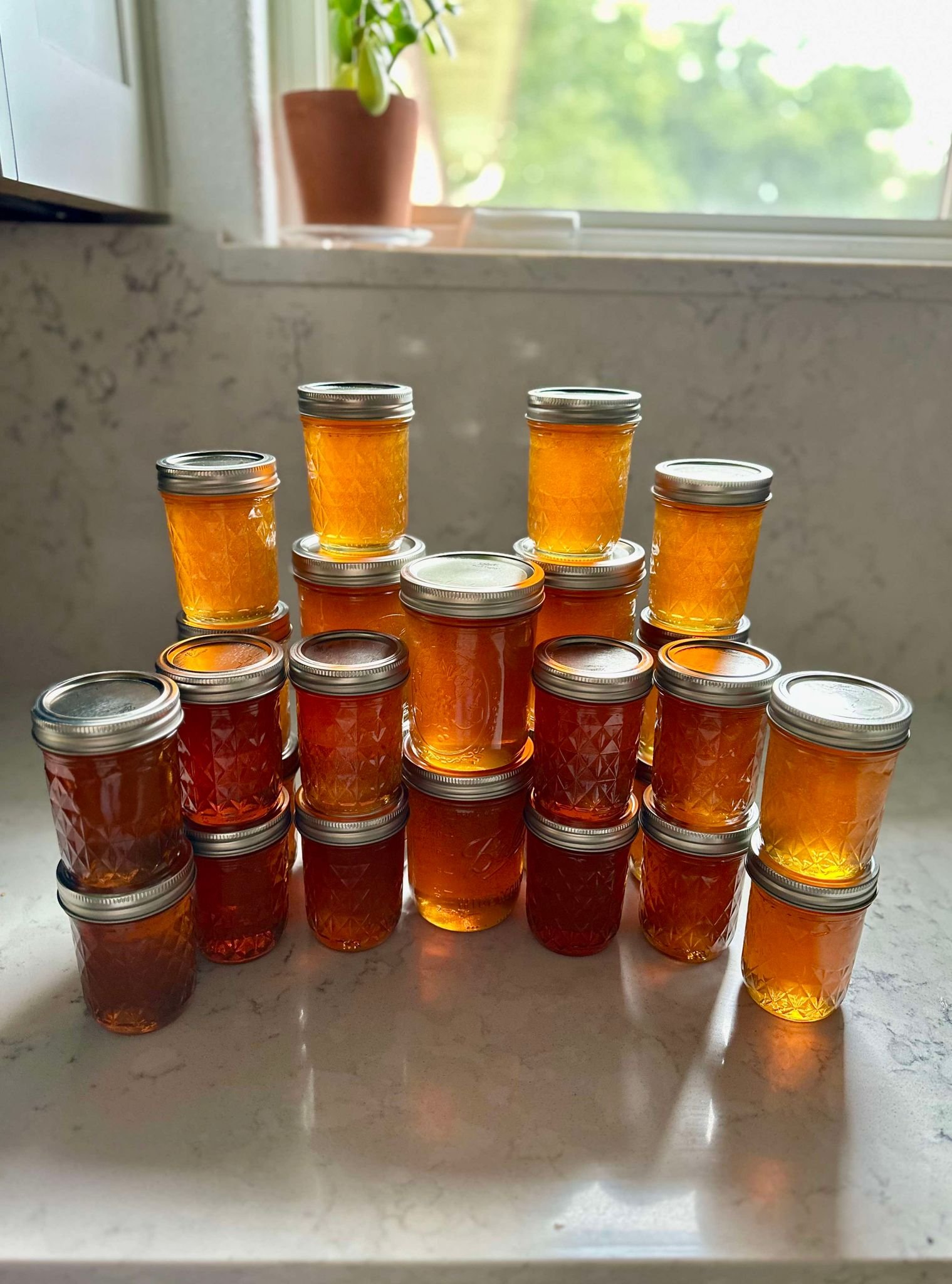Harvesting Honey from a Medium Frame Beehive: A Sweet Reward
As the summer winds down and the first hints of fall start to show, it’s time to enjoy one of the best parts of beekeeping—harvesting honey. This season, our medium frame hive has blessed us with 30+ pounds of honey and one pound of beeswax, and I’m excited to share how we got there.
Getting Ready to Harvest
Before you start collecting honey, it’s important to check that your bees are ready. The honeycomb should be fully capped, meaning the bees have sealed off the cells with wax. This is their way of telling you the honey is ready for storage. Generally, when about 80-90% of the cells on a frame are capped, it’s go-time.
What You’ll Need:
Bee suit and gloves (safety first!)
Hive tool
Uncapping fork
5-gallon bucket with honey gate valve
Jars or bottles for the honey (I prefer wide mouth glass jars.)
The Harvesting Process
Calm the Bees: Start by using your smoker at the entrance and across the top bars of the hive. This helps to calm the bees down and makes the process smoother. Leaves make great kindling as well as pre-made bee smoker pellets.
Remove the Frames: Carefully take out the frames filled with honey. A medium frame can hold about 3 to 4 pounds of honey, so they’ll be a bit heavy. If the frames are stuck together, use your hive tool to gently pry them apart.
Depending on when you harvest, it may be wise to leave one or two frames in the hive as a back up source for your bees. This is not always necessary, but sometimes beneficial in the long run.
Uncapping the Honey: Once the frames are out, it’s time to uncap the honey. Use an uncapping knife or fork to remove the wax cappings from each frame. This step is crucial—it allows the honey to flow freely during extraction.
Be ready to move the frame to the extractor once the caps are opened because the honey will move quickly. Only uncap the frames right before putting them into your extractor.
Extracting the Honey: Place the uncapped frames into your honey extractor. As you spin the extractor, centrifugal force will pull the honey out of the comb. Make sure to balance the extractor by placing frames opposite each other, so it doesn’t wobble.
This is not a one person job! We typically have someone standing on either side of the extractor. Spinning full frames, you will get the inevitable wobble. As the frames begin to empty, the extractor will be easier to control.
Straining the Honey: The honey flows out of the extractor and through a strainer or cheesecloth into your honey bucket. This removes any bits of wax or debris, leaving you with pure, clean honey.
Bottling the Honey: After straining, pour the honey into sterilized jars or bottles. Seal them up tight, and don’t forget to label them with the harvest date and type of honey (if you’ve got different varieties).
Preserving Wax: This is an optional step. You can place the emptied frames directly back in the hive or you can save the wax to use for things such as candles, lip balms, lotions, and so much more. Check out my other blog posts for more on this!
Enjoying the Fruits of Your Labor
Harvesting over 30 pouunds of honey from a medium frame hive is a pretty awesome achievement. It reflects the health of your bees and the effort you’ve put in throughout the season. Each jar of honey is like a little reward for all the care and attention you’ve given your hive.
Storing and Using Your Honey
Now that you’ve got all this honey, the possibilities are endless. Drizzle it on toast, mix it into your tea, or use it in your favorite recipes. Just remember to store it at room temperature in a dark place. If you keep it sealed and stored properly, honey can last practically forever.
Wrapping It Up
There’s something incredibly satisfying about harvesting your own honey. It’s a sweet reminder of the hard work, patience, and connection to nature that comes with beekeeping. Whether you’re new to this or have been doing it for years, every harvest is a unique experience.
Here’s to a successful harvest and many more to come!
One pound of beeswax from our harvest!
Be sure to subscribe to the homemaedhomestead.com newsletter for more advice, recommendations, and a relatable homestead journey.
This blog does contain commissionable affiliate links; however, you can be confident that I only share products that I believe in.



